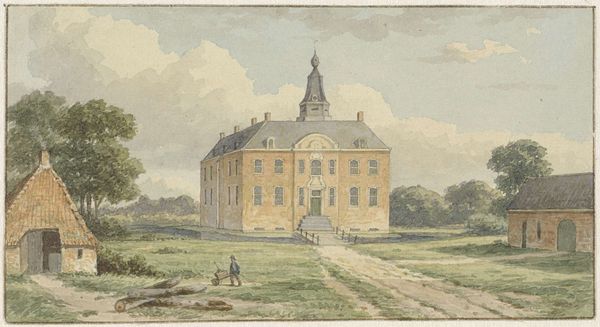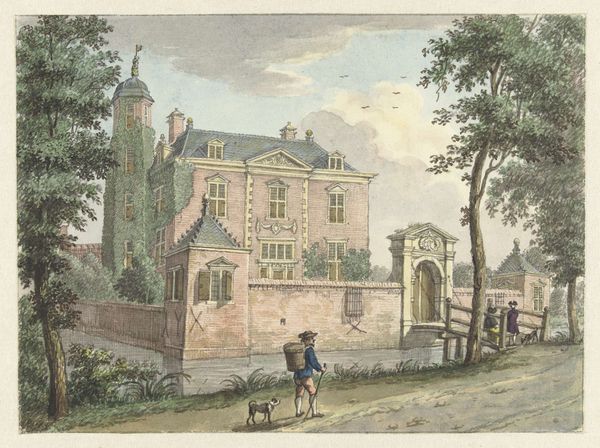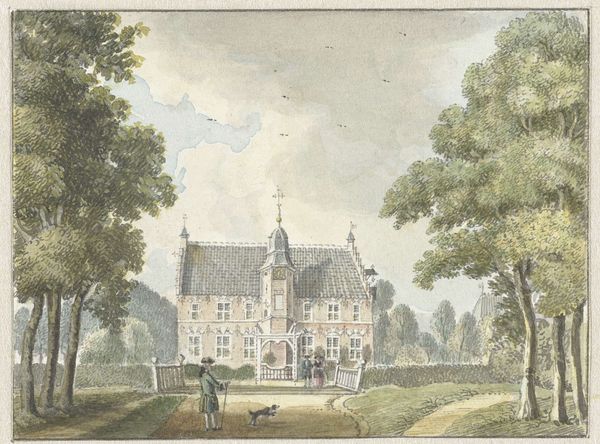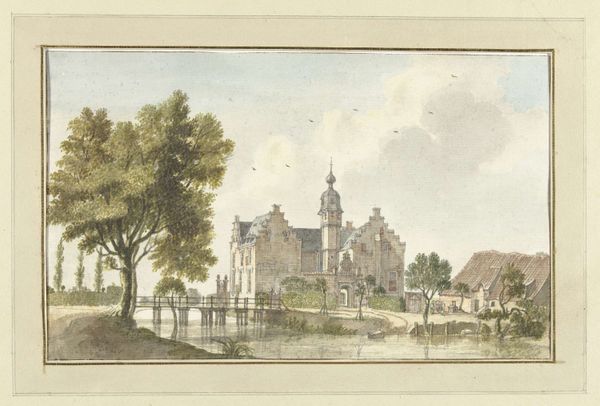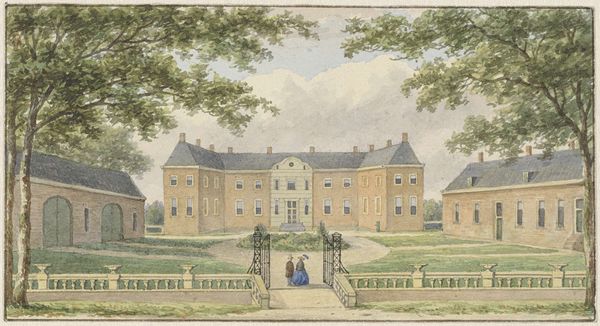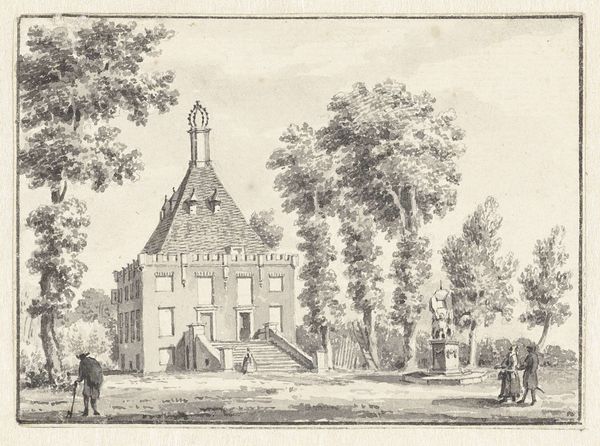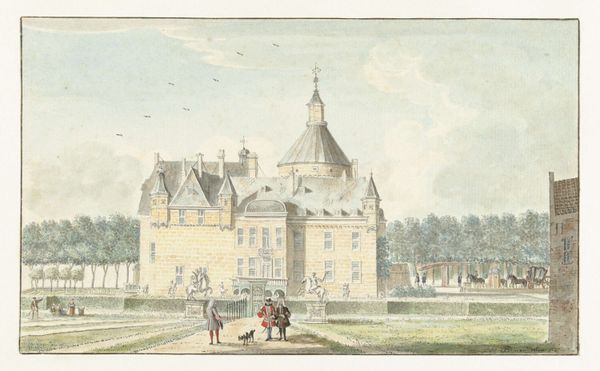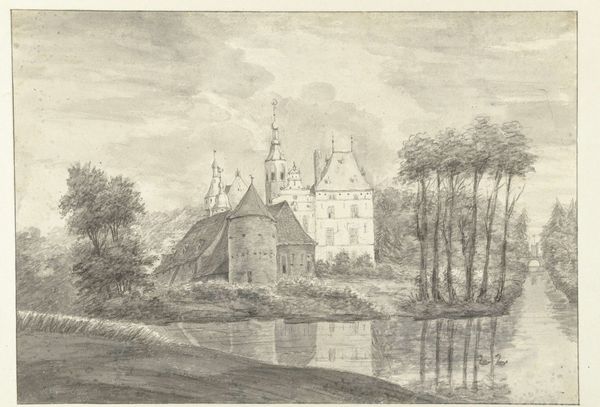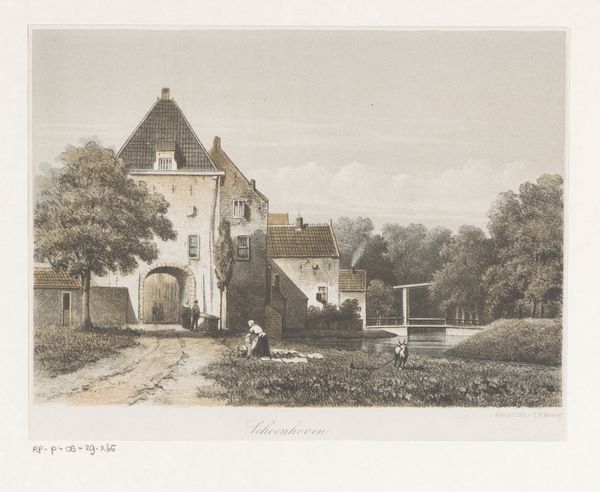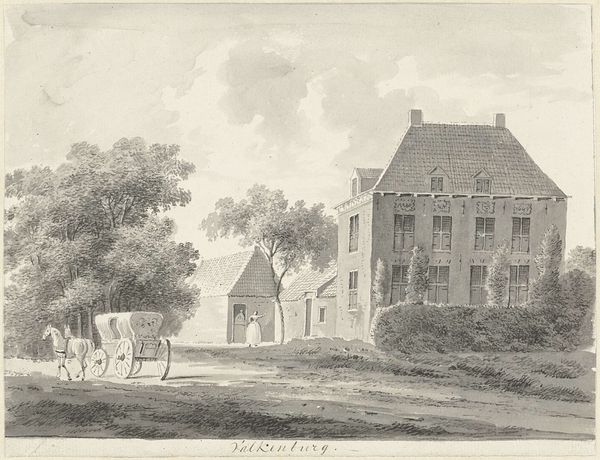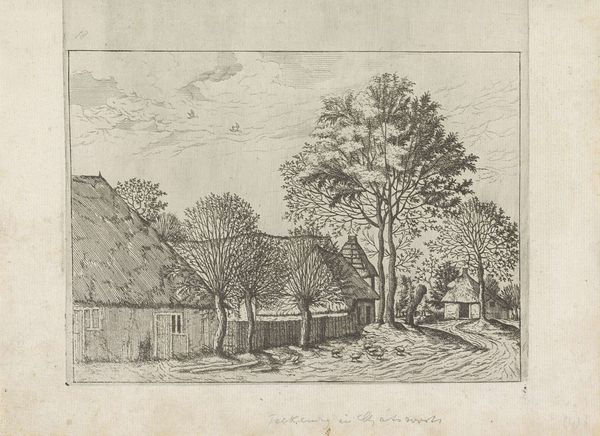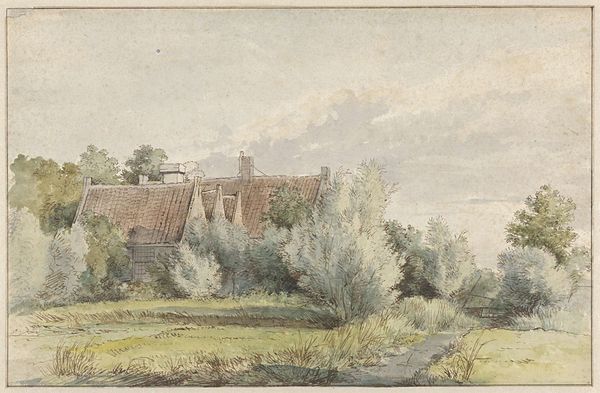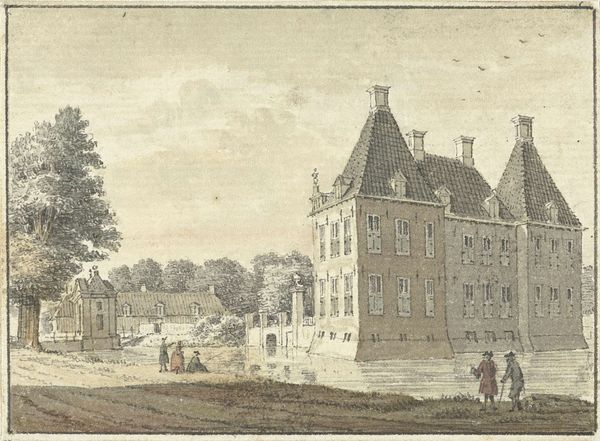
painting, watercolor
#
painting
#
landscape
#
watercolor
#
coloured pencil
#
watercolor
#
realism
Dimensions: height 96 mm, width 178 mm
Copyright: Rijks Museum: Open Domain
Editor: This watercolor, titled "Het Hof te Borculo" by Christianus Hendricus Hein, dates from 1825 to 1879. I find the scene quite peaceful, almost pastoral. What catches your eye when you look at this work? Curator: What immediately grabs my attention is the watercolor medium itself. Consider the accessibility of watercolor – a relatively inexpensive material compared to oils. Who was able to *afford* to produce landscapes like these and *for* whom were they made? And look closer: the presence of livestock indicates an agricultural context – a site of labor. The painting is not just a scene, but also a record of land use, of agricultural production. Editor: So, you're saying that even this serene image reflects social and economic factors? It's not just a pretty picture of a house? Curator: Precisely. Think about the pigments. Where did Hein source his colors? The trade routes involved? And why this composition? The house dominates, yet is integrated into the landscape of agricultural production, isn't it? One has to ask what values are being upheld in this seemingly simple watercolor through its material being and composition? Editor: That is really interesting! I never would have thought about the materials themselves having such a voice. Curator: Art is rarely, if ever, simply aesthetic. Question everything – from the brushstrokes to the economic forces that make the whole process viable. Editor: I see this in a completely different way now. Thinking about labor, materials, it’s far more engaging! Curator: Exactly. A materialist lens opens the door to critical investigation, enriching your experience of art, doesn't it?
Comments
No comments
Be the first to comment and join the conversation on the ultimate creative platform.
